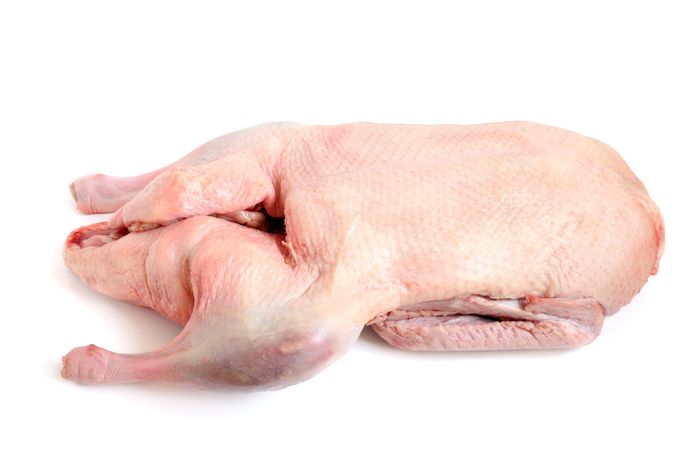Whole duck with liver
There are different kinds of duck, but the mallard is the best known one.
It’s a migratory bird that reaches the south of Europe from the northern countries in autumn and winter. It’s characterized by its blue head and wings and its big size, with the females being smaller and with less bright colours. Also, as any other duck, they are web-footed and their beaks are flat. The youngest and most appreciated ones are the ducklings, which still have their plumule plumage. Mulard or force-fed ducks are those specifically grown for foie gras.
Their meat is red and very tasty. Whole ducks usually weigh around 5 kg. They are normally cooked after departing deboning them in the following cuts: magrets, thighs, wings, liver (foie gras), fat, tripes, heart and carcass.
-
Type of dish
- Beers
- Cocktails
- Breakfasts and brunch
- Burguers
- Juices, milkshakes and beverages
- Shellfish
- Bread and pastries
- Pizzas, patty
- Dessert
- Pasta
- Sándwich
- Pastries
- Finger foods
- Ice creams and sorbets
- Legumes
- Salads
- Eggs
- Patty
- liqueur
- Harvard plate
- Main course
- Meats
- Fish
- Birds
- Vegetables
- Soups and creams
- Rices
- Coffee, chocolate and infusion
- Cheeses
- Appetizers and canapes
- Temperature
- Cuisine type
- Additional culinary preparation
- Conservation technique
- Seasonal recipes
-
- Aromatic herbs
- Beverages
- Big game hunt
- Bread and pastries
- Canned goods and pickles
- Cereals
- Condiments, spices and additives
- Cooked, salted, preserved and cold meats
- Dried fruits and nuts
- Dry pulses
- Edible oils and vinegars
- Eggs and derivatives
- Feathered game hunt
- Fish cuts
- Fishes
- Insects
- Kitchen and bakery tecniques
- Kitchen and bakery utensils
- Meat cuts
- Meats
- Milk, cream and derivatives
- Mushrooms
- Offal
- Pasta, rice, flour and derivatives
- Poultry
- Seafood
- Service techniques
- Service utensils
- Vegetables cuts
- Vegetables, fruits, tubers and seaweed

